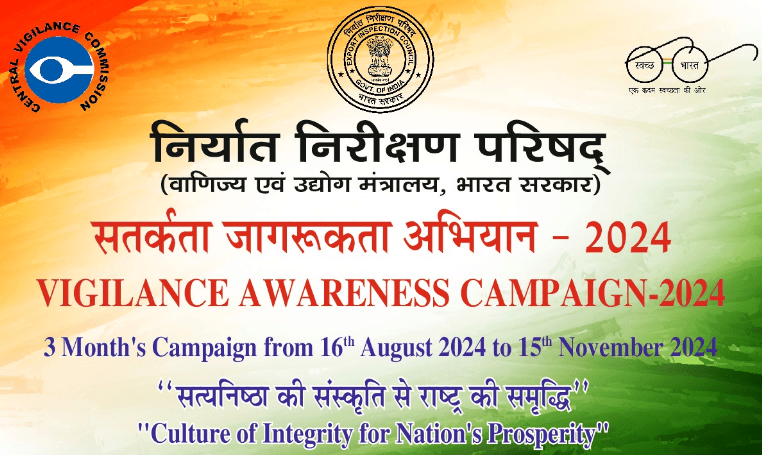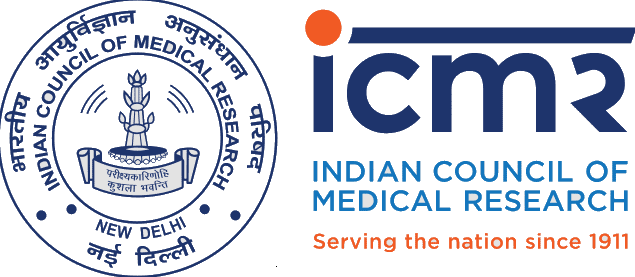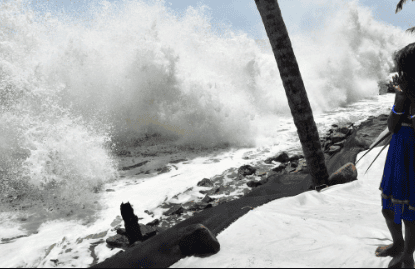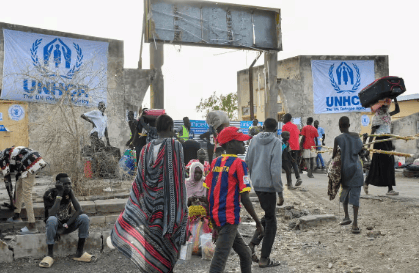Weekly Current Affairs (1st to 7th November 2024) | General Test Preparation for CUET UG - CUET Commerce PDF Download
India’s National Large Solar Telescope Project in Ladakh

- The NLST will be a two-meter class optical and near-infrared observational facility.
- It aims to investigate solar magnetic fields and their dynamics with a spatial resolution of 0.1-0.3 arc-seconds, crucial for studying the Sun's behavior.
Importance of Solar Observations:
- Solar storms, known as Coronal Mass Ejections (CMEs), can release vast amounts of plasma and magnetic fields into space, impacting Earth.
- Predicting solar activity is essential to safeguard technology-dependent life on Earth, as geomagnetic storms caused by CMEs can disrupt radio communications and GPS signals.
Location and Advantages:
- The NLST will be situated at Merak, near Pangong Tso Lake, at an altitude of 4,200 meters, ideal for optical and near-infrared observations.
- This high-altitude site offers clear skies, high transparency, and gentle winds, which are crucial for effective solar observations.
Connection to Other Projects:
- The NLST will complement the Aditya L1 satellite, India's first space-based solar observatory.
- While the satellite is operational, the NLST, despite delays, is expected to provide ground-based data supporting the satellite's findings.
Funding and Timeline:
- The project is estimated to cost over Rs 150 crore and has faced nearly a decade of delays.
- With final approvals pending, the telescope could be operational in a few years, prioritized by the Office of the Principal Scientific Advisor in its 'Mega Science Vision - 2035' document.
Site Characteristics:
- Merak's location near Pangong Tso Lake offers benefits such as a calm atmosphere, continuous breeze for cooling the telescope, and exceptionally clear skies with low light pollution.
- These conditions are ideal for astronomical studies and enhance observation quality.
Latest Developments:
- On July 6, 2024, Dr. Ajay K Sood, Principal Scientific Advisor to the Government of India, visited the NLST site to assess progress and reaffirm the project's significance.
- The telescope is considered a top priority for advancing solar astronomy in India.
Scientific Goals:
- The NLST aims to address key scientific questions about solar behavior, providing vital information about the origin and dynamics of solar magnetic fields.
- Understanding these aspects is crucial for comprehending solar storms and their effects on Earth.
Future Prospects:
- The NLST project is expected to receive final approvals in November 2024, marking a significant step forward in solar research.
- The collaboration between ground-based and space-based observations will enhance our understanding of the Sun and its impact on Earth.
Vigilance Awareness Week 2024

Vigilance Awareness Week 2024 is currently taking place from October 28 to November 3, 2024. The theme this year is "Culture of Integrity for Nation's Prosperity." On November 2, 2024, the Central Vigilance Commissioner and Vigilance Commissioner administered the integrity pledge to officials in New Delhi.
- The Central Vigilance Commission has been conducting a three-month campaign leading up to Vigilance Awareness Week. This year’s campaign started on August 16 and will continue until November 15, 2024, aiming to promote integrity across various sectors.
- An event is scheduled for November 8, 2024, at Vigyan Bhawan, with the Hon’ble President of India as the Chief Guest. This event aims to further promote the values of integrity and vigilance.
All Ministries, Departments, and Organisations of the Central Government are expected to engage in the three-month campaign, focusing on:
- Capacity Building Programs: Enhancing the skills and knowledge of officials through training sessions.
- Systemic Improvement Measures: Identifying and implementing changes to existing systems to reduce inefficiencies and corruption.
- Updating Circulars, Guidelines, and Manuals: Regularly updating procedures and policies to maintain transparency and accountability.
- Disposal of Complaints: Emphasizing the timely resolution of complaints received before June 30, 2024.
- Dynamic Digital Presence: Strengthening online communication and engagement with the public to enhance transparency.
The focus on these preventive vigilance measures aims to create a transparent and accountable system, instilling a culture of integrity vital for the nation’s prosperity.
Integrity is fundamental for building trust within institutions, ensuring officials act in the best interest of the public, and promoting ethical behavior while discouraging corruption.
Officials are encouraged to actively participate in the campaign, with the integrity pledge serving as a commitment to uphold ethical standards. Public awareness is also a key objective, engaging the community in discussions about integrity to encourage collective responsibility and accountability.
The Vigilance Awareness Week and associated campaigns are crucial for promoting integrity, aiming to strengthen systems and create a culture of accountability through focused efforts.
North Korea Test-Fires ‘Hwasong-19’ ICBM

Key Points
- Successful Test of Hwasong-19: North Korea has successfully tested its latest intercontinental ballistic missile (ICBM), the Hwasong-19, which is being described as potentially the world’s strongest missile.
- Advancements in Missile Technology: The Hwasong-19 reportedly features improvements in altitude and flight duration, making it a significant advancement over previous models and a potential threat to countries like the United States.
- Comparison with Hwasong-18: The new missile represents a technological leap from the Hwasong-18, showcasing North Korea’s progress in missile design and performance.
- Solid-Fuel Technology: While details about the missile's technology were not fully disclosed, there are suggestions that the Hwasong-19 may incorporate solid-fuel capabilities. Solid-fuel missiles offer advantages such as quicker launch times and enhanced secrecy during deployment.
- Strategic Implications: The potential use of solid-fuel technology in the Hwasong-19 could enhance North Korea’s strategic capabilities, allowing for rapid responses to perceived threats.
- International Concerns: The successful test has raised alarms internationally, with countries closely monitoring North Korea’s advancements in missile technology due to concerns about regional security and the possibility of an arms race.
- Future Developments: As North Korea continues to develop its missile technology, further tests and improvements are expected, while the international community may respond with diplomatic measures or sanctions to curb these advancements.
ICMR Launches ‘First in the World Challenge’ Initiative

Indian Council of Medical Research (ICMR) has initiated the "First in the World Challenge" to promote innovative solutions for pressing health issues.
- ICMR, one of the oldest medical research organizations globally, aims to improve public health through innovative research.
- The challenge focuses on generating novel ideas and technologies such as vaccines, therapeutics, diagnostics, and health interventions that are original and have never been attempted before.
- Proposals should present bold and impactful research ideas with the potential for significant global health improvements.
- The initiative embraces a high-risk, high-reward approach, encouraging transformative advancements in biomedical science.
- Proposals can be submitted by individuals or research teams, fostering collaboration and diverse expertise.
- A selection committee of experts will evaluate the proposals to ensure a rigorous review process.
- The challenge aims to stimulate creativity in the biomedical field and drive advancements that could lead to new health technologies benefiting populations globally.
- By focusing on innovative and original ideas, ICMR hopes to create an environment of creativity and exploration, paving the way for groundbreaking health solutions.
Kerala’s Coastal Zone Management Plan Approved

The Union Ministry of Environment, Forest and Climate Change has approved Coastal Zone Management Plans (CZMPs) for ten coastal districts in Kerala, in line with the Coastal Regulation Zone (CRZ) Notification of 2019. This approval relaxes rules, allowing development activities, including construction towards the seaward side.
What is the CZMP?
- The Coastal Zone Management Plan (CZMP) is a strategic framework designed to manage and protect coastal areas while facilitating sustainable development.
- The approved CZMPs for the ten districts in Kerala aim to strike a balance between environmental protection and developmental needs.
Implementation Process:
- The Kerala government has been instructed to publish signed copies of the approved CZMPs within a month.
- All applications for CRZ clearance submitted after the CZMP approval will adhere to the 2019 CRZ rules, ensuring transparency and public awareness.
Historical Background:
- The CRZ rules were put in place to safeguard coastal environments and support local livelihoods, especially for fishing communities.
- The 2011 CRZ regime focused on conservation, but due to Kerala's high population density, there were widespread violations, including illegal land modifications and construction.
Population and Demographics:
- Kerala has a coastline of about 590 km, with nine out of fourteen districts along the Arabian Sea.
- The state has a high population density of 859 persons per square kilometre, more than double the national average, increasing the need for careful coastal management.
Benefits of the CZMP Approval:
- The CZMP approval is expected to benefit around 1 million people by relaxing restrictions on building new homes and repairing existing ones.
- The No Development Zone (NDZ) around tidal-influenced water bodies will be reduced from 100 metres to 50 metres in many areas.
Changes in CRZ Categories:
- The new regulations classify 37 village panchayats as CRZ-III A, reducing the NDZ to 50 metres from the High Tide Line in densely populated rural areas.
- Additionally, 66 village panchayats are now classified under CRZ-2, permitting the construction of commercial and residential buildings along existing structures.
Impact on Mangroves:
- The changes in CRZ rules raise concerns about mangrove ecosystems, as mangroves are crucial for coastal health and serve as breeding grounds for various marine species.
- The buffer zones around mangroves have been reduced from 4,300 hectares to 2,500 hectares, potentially leading to increased exploitation and loss of mangrove habitats.
Environmental Concerns:
- The reduction of protective measures for mangroves could have severe consequences for coastal ecosystems.
- While private landowners may benefit from fewer restrictions, the long-term impact could be detrimental, risking the loss of mangrove vegetation and threatening biodiversity and coastal resilience.
The approval of CZMPs represents a significant shift in Kerala's coastal management strategy, opening avenues for development while posing challenges for environmental protection. Striking a balance between growth and conservation will be essential for the future of Kerala's coastal regions.
CCPA’s New Guidelines Combat Greenwashing in Advertising
About Greenwashing:
- Greenwashing is when companies pretend to be more eco-friendly than they really are by using terms like "natural," "sustainable," or "eco-friendly" without any proof. This tricks consumers and harms real sustainability efforts.
New Guidelines from CCPA:
- The CCPA's new rules limit vague environmental claims in ads. Companies need to back up these claims with scientific evidence or third-party certification to ensure transparency and protect consumers.
Impact on Startups:
- Startups, especially in the consumer and food sectors, are seeking legal advice to ensure their product labels, packaging, and advertising comply with the new guidelines.
- There is an increase in inquiries about marketing strategies and potential penalties for non-compliance.
- Companies must provide verifiable evidence for any environmental claims, and terms like "carbon-neutral" cannot be used without substantiation.
Building Consumer Trust:
- The guidelines aim to reduce misleading advertisements and foster consumer trust.
- Companies using biodegradable or recycled materials are unsure if they need third-party certifications and are seeking legal advice for accurate communication of their environmental impact.
- Material information must be made accessible to consumers through packaging, QR codes, or URLs, and startups are looking for guidance on implementing these disclosures effectively.
Advertising Adjustments:
- Compliance may require changes to advertisements and product packaging, including audio-visual advertisements.
- Companies need to rework marketing materials to align with the new regulations.
Puffery vs. Unsubstantiated Claims:
- The guidelines distinguish between puffery (exaggerated statements not meant to be taken literally) and unsubstantiated claims.
- Careful assessment is needed to avoid crossing the line between puffery and misleading claims.
Benefits of Compliance:
- Companies following the guidelines will gain consumer trust and attract sustainability-focused investors.
- Authentic environmental claims can improve a company's reputation and market position.
Investor Perspective:
- Investors are paying more attention to the authenticity of environmental claims.
- Startups demonstrating transparency in their technology and product offerings will have a competitive advantage.
- Compliance with CCPA guidelines can be a key factor in attracting investment.
The CCPA's guidelines represent a significant change in how companies can promote their environmental credentials. Startups need to navigate these changes carefully to ensure compliance and build trust with consumers and investors.
UN Warns of Worsening Food Insecurity in 22 Countries

A new UN report has highlighted worsening acute food insecurity in 22 countries and territories, projecting this trend from November 2024 to May 2025. Key countries affected include Nigeria, Sudan, Yemen, Ethiopia, and Haiti.
Countries Affected:
- The report identifies 14 countries and two regional clusters facing critical food insecurity.
- Specific countries include Nigeria, Sudan, Yemen, Ethiopia, Myanmar, Syrian Arab Republic, South Sudan, Zimbabwe, Zambia, Malawi, Haiti, Somalia, Chad, Niger, Mozambique, Burkina Faso, Palestine (Gaza Strip), Kenya, Mali, Lebanon, Namibia, Lesotho.
- Ongoing conflict and armed violence are the primary drivers of hunger, disrupting food systems, displacing communities, and hindering humanitarian efforts.
- Regions like Sudan, Palestine, and South Sudan are at the highest risk for famine.
Current Hotspots:
- The report highlights severe situations in the Zamzam camp in North Darfur and the Gaza Strip.
- Haiti, Mali, and South Sudan also face critical food insecurity.
- New additions to the hunger hotspots list include Kenya, Lesotho, and Namibia.
- In the Central Sahel region, violence from non-state armed groups is escalating, with northern Mali and Burkina Faso experiencing severe food insecurity due to violence and access restrictions.
- Chad is facing challenges from conflict and a refugee influx from Sudan, while northern Nigeria ’s security situation is deteriorating.
Regional Impacts:
- In Southern Africa, conflict in northern Mozambique is expected to worsen food insecurity.
- Myanmar is facing economic turmoil due to ongoing violence.
- In Latin America, rising violence in Haiti is pushing displaced communities into hunger.
Scope of the Crisis:
- A staggering 169.2 million people are projected to face acute food insecurity across these regions.
- This includes 31.8 million in Nigeria, 21.1 million in Sudan, 19 million in Yemen, 15.8 million in Ethiopia, 13.3 million in Myanmar, 12.9 million in the Syrian Arab Republic, and 7.1 million in South Sudan.
Climate Factors:
- Weather extremes and climate variability are exacerbating food insecurity. La Nina is expected to persist, impacting rainfall and temperatures.
- While some regions may see improved agricultural conditions, others will likely face devastating floods, particularly in Nigeria, Malawi, and Mozambique.
- Dry conditions may affect Ethiopia and Somalia.
Urgent Measures Needed:
- The report emphasizes the need for immediate action to prevent a worsening crisis.
- The FAO and WFP urge global leaders to focus on conflict resolution, economic support, and climate adaptation strategies.
- Cindy McCain, WFP Executive Director, stressed the urgency for world leaders to collaborate on solutions addressing conflicts, enabling safe humanitarian work, and mobilizing resources to combat global hunger effectively.
Fifteenth Finance Commission Grants for Rural Local Bodies
The Union Government has disbursed the Fifteenth Finance Commission (XV FC) Grants for the financial year 2024–25, targeting Rural Local Bodies (RLBs) in Haryana, Tripura, and Mizoram to bolster local governance and promote rural development.
Grants for Haryana:
- Haryana’s Panchayati Raj Institutions (PRIs) received Untied grants amounting to Rs.194.867 crores, marking the first installment for the year.
- The funds are distributed among 18 District Panchayats, 139 Block Panchayats, and 5,911 Gram Panchayats that met the necessary conditions for the grants.
Grants for Tripura:
- Tripura’s RLBs were granted two types of funding:
- The first installment of Untied grants totaling Rs.31.40 crores.
- The first installment of Tied grants amounting to Rs.47.10 crores.
- These grants are applicable to all 1,260 RLBs, including traditional bodies such as the Tripura Tribal Areas Autonomous District Council (TTAADC) and various village committees.
Grants for Mizoram:
- Mizoram received the second installment of grants from the XV FC, which includes:
- Rs.14.20 crores in Untied grants for the financial year 2022–23.
- Rs.21.30 crores in Tied grants for the same period.
- These funds support all 834 village councils, including those situated in Autonomous District Council areas.
About Tied and Untied Grants:
- Untied Grants. These grants can be used for specific local needs across 29 subjects outlined in the Eleventh Schedule of the Constitution. However, they cannot be utilized for salaries or establishment costs.
- Tied Grants. These grants are designated for specific services, including:
- Sanitation and maintaining Open Defecation Free (ODF) status.
- Management of household waste and fecal sludge.
- Supply of drinking water and initiatives for rainwater harvesting and water recycling.
Objective of the XV FC Grants:
- The XV FC Grants aim to empower Panchayati Raj Institutions (PRIs) and Rural Local Bodies (RLBs), promoting self-governance and accountability in rural areas.
- The funds are intended to enhance the capacity of local bodies, enabling them to drive sustainable development effectively.
Alignment with National Vision:
- This initiative is in line with Prime Minister Narendra Modi’s vision of ‘Sabka Saath, Sabka Vikas, Sabka Viswas, Sabka Prayas’, supporting inclusive growth and participatory democracy, which are crucial for national development.
Grant Release Process:
- The Government of India, through the Ministry of Panchayati Raj and the Ministry of Jal Shakti, recommends the release of XV FC grants to states.
- The Ministry of Finance is responsible for disbursing these funds, typically in two installments within a financial year.
Tanushree Pandey Wins Silver at World Soft Tennis

Tanushree Pandey, hailing from India, achieved a remarkable feat by securing a Silver Medal at the World Soft Tennis Championship held in Jingshan, China. This accomplishment not only highlights her skill and determination in the sport but also brings attention to the growing interest in soft tennis in India.
What is Soft Tennis?
- Soft Tennis is a variation of traditional tennis that uses softer balls and lighter rackets, making it more accessible and enjoyable for players of all ages.
- The game is played on a smaller court and is popular in several Asian countries, including Japan and Taiwan.
About the Championship:
- The World Soft Tennis Championship is a prestigious event that gathers top players from around the globe to compete in various categories, including singles and doubles.
- The tournament showcases the best talents in soft tennis and provides a platform for players to demonstrate their skills on an international stage.
Tanushree's Journey in the Championship:
- Quarterfinals: Tanushree faced a tough Chinese opponent and won the match 4-3, advancing to the semifinals.
- Semifinals: She played against a Japanese player in an intense and competitive match, winning 4-3 to secure a spot in the finals.
- Final Match: Tanushree faced Chiang Min Yu from Chinese Taipei in the final. The match was closely contested, and although she played well, she ultimately lost 3-4.
Significance of the Silver Medal:
- Winning a Silver Medal at the World Soft Tennis Championship is a significant achievement that showcases Tanushree's talent on an international stage.
- Her success inspires young athletes in India and raises the profile of soft tennis in the country.
- Tanushree's performance indicates a bright future in the sport, and with continued training and experience, she has the potential to achieve even more.
- This victory may lead to more opportunities for her in upcoming tournaments and contribute to India's growing presence in international soft tennis competitions.
Conclusion
- Tanushree Pandey's Silver Medal win at the World Soft Tennis Championship adds to India's achievements in sports and marks the increasing interest in soft tennis.
- As more players emerge in this sport, India's presence in international competitions is likely to strengthen, and Tanushree's success will inspire others to follow in her footsteps.
Government Approves PM-Vidyalaxmi Scheme for Education Funding
PM-Vidyalaxmi Scheme:
- The PM-Vidyalaxmi scheme is a new initiative aimed at supporting meritorious students in both private and public Quality Higher Education Institutions (QHEIs) in India.
- With a budget of Rs 3,600 crore over five years, starting from 2024-25, the scheme aligns with the National Education Policy 2020.
Eligibility Criteria:
- Students from families with an annual income of up to Rs 8 lakh are eligible for the scheme.
- These students will receive a 3% interest subvention on education loans up to Rs 10 lakh, without the need for collateral or a guarantor.
Loan Application Process:
- The application process for the PM-Vidyalaxmi scheme will be fully digital.
- Students can apply through a consolidated portal called PM-Vidyalaxmi, which will facilitate access to education loans and interest subvention from various public and private scheduled banks.
Expected Impact:
- The scheme aims to assist over 22 lakh students annually, providing education loans for those enrolling in the top 860 prestigious higher education institutions across India.
- The funding allocated for this initiative will span from 2024-25 to 2030-31.
Complementary Schemes:
- The PM-Vidyalaxmi scheme will complement existing initiatives such as the Central Sector Interest Subsidy (CSIS) and the Credit Guarantee Fund Scheme for Education Loans (CGFSEL).
- Under CSIS, students from families earning up to Rs 4.5 lakh will continue to receive full interest subvention on education loans during the moratorium period.
Equity Infusion in the Food Corporation of India:
- The Union Cabinet approved a Rs 10,700 crore equity infusion for the Food Corporation of India (FCI) for the financial year 2024-25.
- This funding aims to support FCI’s working capital needs and reduce its reliance on short-term borrowings.
Purpose of the Equity Infusion:
- The equity infusion is designed to lower FCI’s interest burdens and decrease government subsidy expenditures.
- FCI’s authorised capital has increased from Rs 10,000 crore to Rs 21,000 crore as part of this initiative.
FCI’s Role in Food Security:
- The Food Corporation of India plays a crucial role in India’s food security by procuring food grains at Minimum Support Prices (MSP), maintaining strategic stocks, and distributing food for welfare measures.
- The government’s food subsidy has significantly increased, amounting to Rs 21.56 lakh crore from 2014 to 2024.
Conclusion
- The PM-Vidyalaxmi scheme and the equity infusion into the Food Corporation of India are important steps towards improving access to quality higher education and ensuring food security in India.
- These initiatives reflect the government’s commitment to supporting students and stabilizing the food market.
|
164 videos|800 docs|1160 tests
|





















